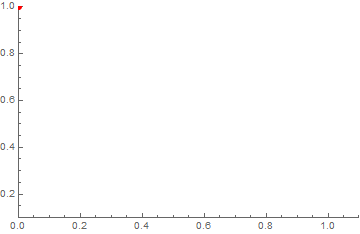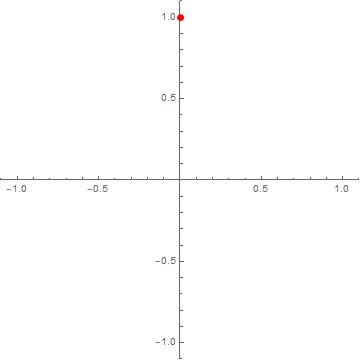Confusion about components of circular motion
Your question is interesting because it shows the dangers of working with infinitesimals without a careful control of their meaning.
Basically, your question is applicable to any motion, when the trajectory in phase space reaches an extremum along one of the directions. So, for simplicity let's discuss the simple one dimensional harmonic oscillator, which, in your example exactly corresponds to the $x$- component of the uniform circular motion.
The equation of motion is $$ \ddot x(t) = - \omega^2x(t), $$ valid for any time $t$. When $x=0$, acceleration is zero and the speed along $x$ direction is maximum.
So,how it happens that there is a decrease of $\dot x$?
A naïf application of infinitesimals is misleading. In the present case $$ \dot x(t+dt) \simeq \dot x(t) + \ddot x(t) dt $$ would imply $\dot x(t+dt) = \dot x(t) $. But this is just the first order result. First order approximations are the leading term of a local analysis of the behavior of a regular function provided they do not vanish. When, like in the case of an extremum of velocity at time $t_0$ (threfore $\ddot x(t_0)=0$), the first order variation is zero, it is necessary to look for the next non-zero term in an expansion in powers of $dt$. In the present case: $$ \dot x(t_0+dt) = \dot x(t_0) + \ddot x(t_0) dt + \frac12 \dddot x(t_0) dt^2 = \dot x(t_0) - \frac12 \omega^2 \dot x(t_0) dt^2, $$ where use has been done of the equation of motion (by taking a time derivative of both sides) in order to express the third derivative of $x$ with respect to time as a function of $\dot x$.
Therefore, one can see that, at the dominant non vanishing order in $dt$, $\dot x$ is correctly varying.
I'm going to take a slightly different approach compared to the other answers, although we really all are essentially saying the same thing. The issue is that you are treating the "next instant" as finite. Therefore at the next finite instant the horizontal velocity will not change at all, and it isn't until the next finite step after the first one that the horizontal velocity will change.
More specifically, you are essentially thinking in terms of solving your differential equations $$\frac{\text d\mathbf r}{\text dt}=\mathbf v$$ $$m\frac{\text d\mathbf v}{\text dt}=\mathbf F$$
by using an approximation $$\Delta \mathbf r=\mathbf v\Delta t$$ $$m\Delta \mathbf v=\mathbf F\Delta t$$
for finite $\Delta t$. Therefore, if your initial conditions are $$\mathbf r(0)=(0,R)$$ $$\mathbf v(0)=(v,0)$$ and if your force is given by $$\mathbf F(t)=(-F\sin(\omega t),-F\cos(\omega t))$$
then your first step will give you $$\mathbf r(\Delta t)=\mathbf r(0)+\Delta \mathbf r=(0,R)+(v,0)\Delta t=(v\Delta t,R)$$ $$\mathbf v(\Delta t)=\mathbf v(0)+\Delta \mathbf v=(v,0)+(0,-F/m)\Delta t=(v,-F/m\cdot\Delta t)$$
Which is what you were thinking... The horizontal velocity doesn't change, and since the object was only moving horizontally, it doesn't move down either. Once you apply this approximation again you will see the object start to move down, and the horizontal velocity will change. This is shown in the animation below for a rather large $\Delta t$ where I have paused it after the first step to show the purely horizontal motion.

Once you make $\Delta t$ smaller and smaller, you will see that we get a trajectory that looks more like uniform circular motion.

But you can never escape that the very next instant will have no change in horizontal velocity for finite $\Delta t$. This is because in the continuous limit there really is no "next moment", i.e., you cannot pick the "next real number" after $0$.
People have given detailed answers above. I will just offer a more intuitive way of thinking about it. You're right that at the instant under consideration there is no horizontal force on the object. So that tells us that its horizontal speed is not under any influence of change at that instant. Therefore, the object continues with that speed but as soon as it leaves the point under consideration there is then a horizontal component of force on the object so its speed changes.